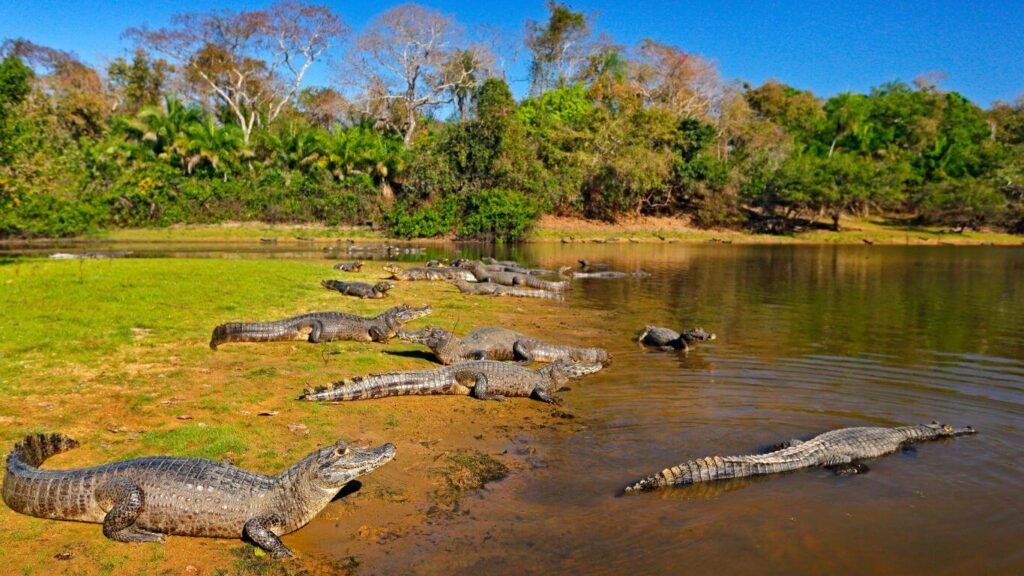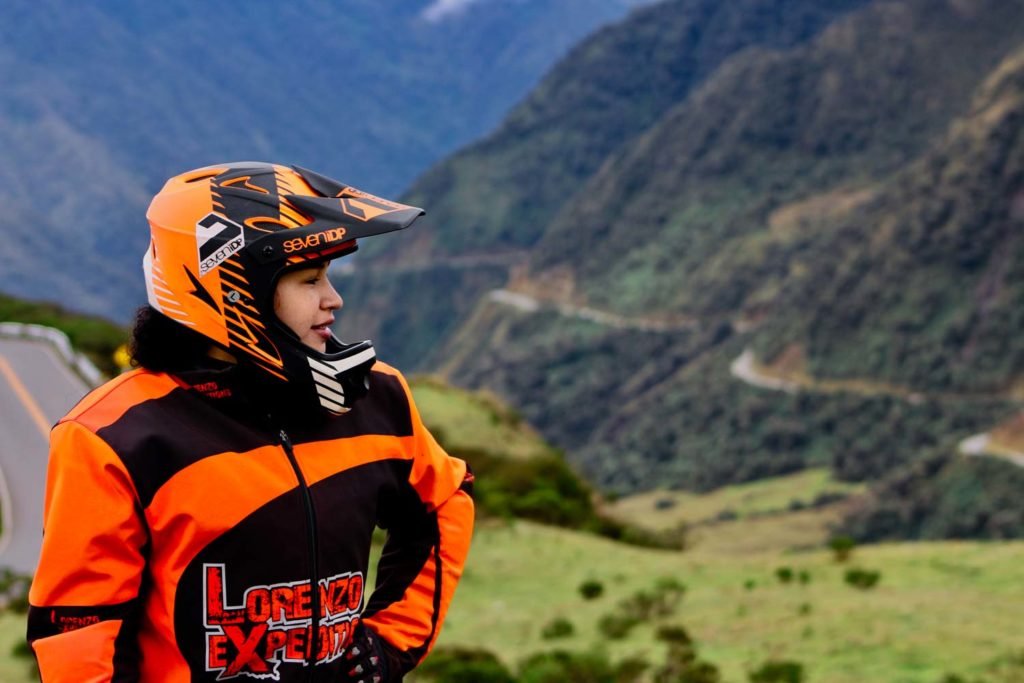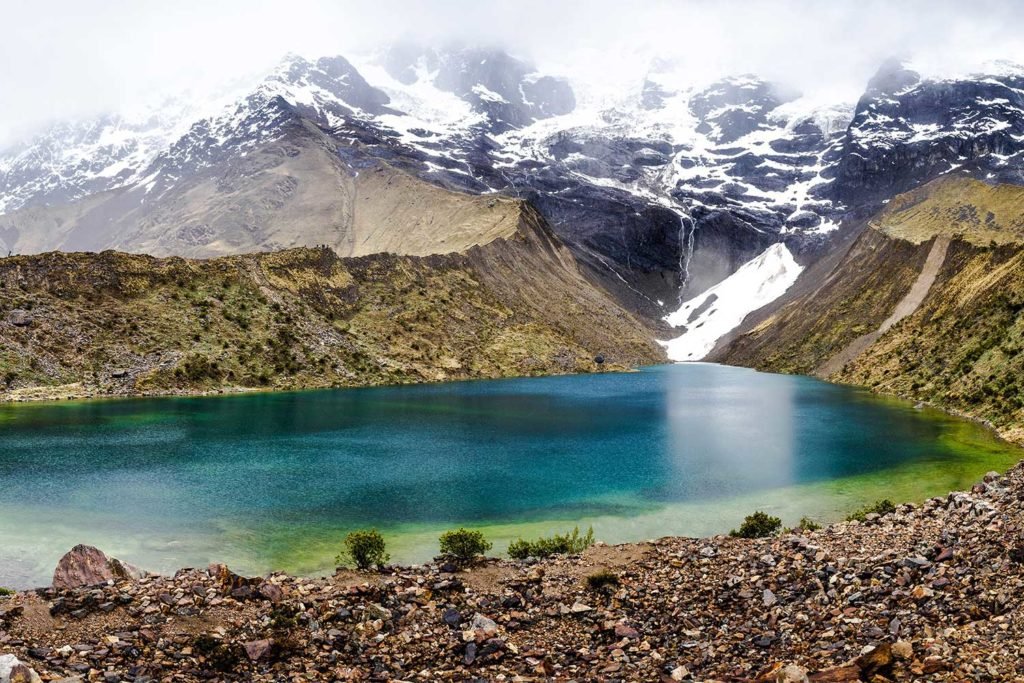Have you ever dreamed of diving into the heart of the Brazilian Pantanal and coming face-to-face with the towering alligators, the “prehistoric giants” of South America? Get ready to live a unique and exciting experience, where you will be able to observe these fascinating reptiles in their natural habitat.
The Pantanal, the largest floodplain in the world, is home to incomparable wildlife. Among its most fascinating inhabitants are alligators, prehistoric reptiles that have thrived in this ecosystem for millions of years. In this article, we’ll embark on a journey to uncover the secrets of these formidable creatures, from their behavior and physical characteristics to their vital role in balancing the Pantanal.
Alligators of the Pantanal: Your Unforgettable Ecotourism Adventure

Where Do Pantanal Alligators Live?
The Pantanal, the largest floodplain in the world, is the perfect home for alligators to thrive. This vast region, located primarily in Brazil, but also extending to Paraguay and Bolivia, offers an endless network of rivers, lakes, wetlands, and savannahs that provide the ideal habitat for these reptiles.
The Alligator Habitat
Pantanal alligators are most comfortable in shallow, calm waters, where they can hunt and rest with ease. They can be found along the region’s rivers, lagoons, and wetlands, as well as in the savannas and forests flooded during the rainy season.
How Do Pantanal Alligators Behave?

These towering reptiles exhibit a fascinating range of behaviors that have helped them survive for millions of years.
Nighttime Habits and Eating
Alligators are primarily active at night, when they go out to hunt their prey, which includes fish, birds, small mammals, and even other reptiles. Thanks to their powerful jaw and sharp teeth, they can devour their victims with ease.
Reproduction and Territoriality
During mating season, male alligators become aggressive and territorial, defending their domains from other rival males. Females build nests on the shore and lay 20 to 60 eggs, which they incubate for about 3 months.
Impressive Physical Characteristics
Pantanal alligators can reach truly imposing sizes, with some measuring more than 3,5 meters in length and weighing hundreds of kilos. Their hard, scaly skin protects them, while their protruding eyes and nostrils allow them to remain almost completely submerged in water.
How Do Alligators Differ From Alligators?

Although often confused, alligators and alligators are distinct reptiles with a few key differences.
Hallmarks
Alligators have a narrower, elongated snout, while alligators have a wider, shorter snout. In addition, alligators tend to be larger in size than alligators.
Geographical distribution
Alligators are mainly found in Central and South America, while alligators inhabit only South America, especially in the Pantanal region.
What are the Species of Alligators in the Pantanal?

The Pantanal is home to several species of alligators, each with its own distinctive characteristics and behaviors. Getting to know these different varieties will further enrich your viewing experience during our excursions.
Caiman Yacaré
The alligator is probably the best known and most abundant species in the Pantanal region. It is characterized by its large size, with some specimens reaching more than 3,5 meters in length, its wide snout and its olive green coloration. It is the most emblematic alligator in this area.
Broad-snouted alligator
The broad-beaked caiman is another prominent species in the Pantanal. As the name implies, it has a shorter and wider snout than the alligator caiman, giving it a more robust appearance. It is usually smaller in size than the alligator, but just as impressive.
Black Alligator
The black caiman, also known as the Amazon caiman, is found in some areas of the Pantanal. Unlike the other species, this caiman is characterized by its dark, almost black color. It is smaller than the alligator, but no less fascinating.
Dwarf Caiman
Finally, the dwarf caiman is the smallest species that inhabits the Pantanal. As the name suggests, it barely reaches around 1.5 meters in length, making it the tiniest of the alligators in the region. Despite its size, it is still an imposing creature.
Each of these species has unique characteristics that differentiate them from each other, whether in their physical appearance, their behavior, or their geographic distribution within the Pantanal. Our excursions will allow you to appreciate these subtle but important differences up close, further enriching your experience of observing these fascinating reptiles.
How Do Humans Interact with Pantanal Alligators?

The relationship between humans and alligators in the Pantanal is one of fascination and mutual respect.
Alligator Watching
Our tours and safaris will give you the opportunity to observe these imposing reptiles in their natural habitat in a safe and responsible way. Always follow the instructions of our expert guides to enjoy this unique experience.
Alligator Attacks
Although alligator attacks on humans are rare, it is important to note that they are wild and potentially dangerous animals. Our guides will teach you how to prevent and, if necessary, how to act in the event of a possible alligator bite.
Ecological Importance
Alligators play a vital role in balancing the Pantanal ecosystem, controlling populations of other species and maintaining the health of the wetland. Our excursions will allow you to appreciate its importance for the conservation of this unique region.
Alligators in Culture
These fascinating creatures have inspired legends, myths, and symbolism in the region’s indigenous cultures, who consider them sacred and powerful beings. Knowing these stories will help you better understand the connection between the alligators and the peoples of the Pantanal.
Frequently Asked Questions about Pantanal Alligators

1. What is the largest size of a Pantanal alligator?
Pantanal alligators can reach impressive sizes. Some specimens measure more than 3,5 meters in length and weigh hundreds of kilos.
2. Are alligators dangerous to humans?
Although alligator attacks on humans are rare, it is important to exercise caution. It is crucial to follow the directions of our expert guides, as they are wild and potentially dangerous animals.
3. How many types of caimans are there in the Pantanal?
The Pantanal is home to four main species of alligators: the alligator caiman, the broad-beaked caiman, the black caiman, and the dwarf caiman.
4. What is the best time of year to see alligators in the Pantanal?
The best time to spot alligators in the Pantanal is during the dry season. This occurs between May and October, when the animals concentrate in the areas with water.
5. How to observe alligators in the Pantanal?
There are guided tours and safaris that allow you to observe caimans in their natural habitat. It is important to follow the guide’s safety instructions to avoid any kind of accident.
6. Why are alligators important in the ecosystem?
Alligators are an important part of the Pantanal ecosystem. They help control the populations of other animals, such as fish and rodents, and maintain the balance of the ecosystem.
7. What should I do if I see an alligator while in the Pantanal?
Stay calm and back away slowly. Do not approach the alligator or attempt to photograph it up close. Inform your guide or tour operator about the presence of the alligator.
8. What kind of tours are available to observe alligators?
There are different types of tours to observe alligators in the Pantanal, from half-day tours to multi-day excursions. Some of the most popular types of tours are:
- ATV Safaris: Trek through the savannahs of the Pantanal in search of alligators and other wildlife.
- Boat trips: Cruise along the rivers and lakes of the Pantanal to observe alligators in their natural habitat.
- Guided hikes: Explore nature on foot and learn about the flora and fauna of the Pantanal, including alligators.
9. What should I do if I see an alligator while on the tour?
- Stay calm and follow your guide’s instructions.
- Don’t approach the alligator or try to photograph it up close.
- Don’t make noise or sudden movements.
- Let your guide know if you see an alligator that seems dangerous to you.
10. What should I bring to observe alligators in the Pantanal?
- Comfortable, breathable clothing in neutral colors.
- Waterproof shoes or boots.
- Mosquito repellent and sunscreen.
- Hat or cap to protect you from the sun.
- Binoculars to observe alligators from a distance.
- Camera to capture your best moments.

Reserve your spot now and get ready for an unforgettable ecotourism adventure in the Pantanal!
Our team of expert guides will take you to discover the fascinating world of alligators in a safe, responsible and environmentally friendly way. Live a unique experience that you will remember forever!
Your adventure in the Pantanal awaits!





